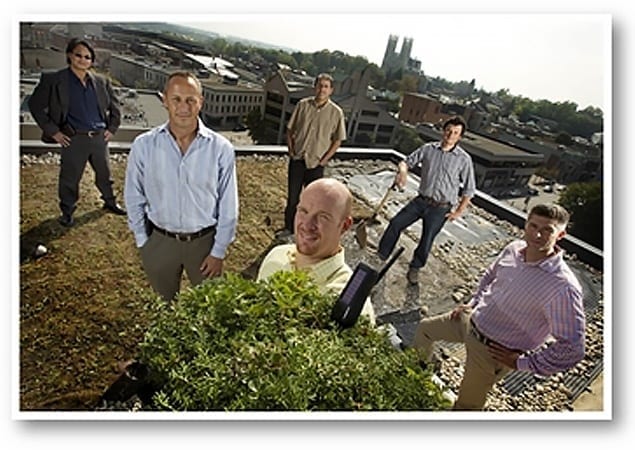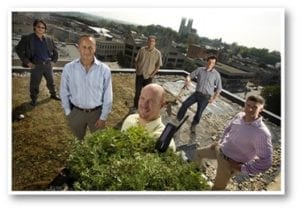Click here to view the original article as it appears on Forbes.com.
Just as wireless sensor networks increasingly are helping building owners and tenants keep track on energy efficiency and water conservation inside, they are also at the center of several new research projects – including one at the aforementioned Walmart site – that aims to build a better understanding of their performance.
After all, it isn’t all that practical or safe for this sort of information to be collected manually by humans.
First, a definition, since green roofs are still relatively rare. Their main feature is native vegetation that has three jobs to do other than look pretty: provide better insulation against the elements, absorb and collect rainwater, and mitigate the heat island effect often caused by dark roofs. They are usually with a foundation structure and different layers for drainage and protection from the sun.Walmart’s roof in Oregon isn’t completely covered with plants: about 40,000 square feet is planted in three sections, while the remaining 52,000 square feet uses the sort of white membrane roofing material you’d typically see on a big warehouse store of this nature. (It’s actually the fourth largest eco-roof built so far by the giant retailer.)Over the next two years, both sections will be wired up with dozens of sensors and a weather station as part of a two-year research project with the Portland State University Green Building Research Laboratory. The data collected will offer a side-by-side comparison of surface temperatures, water flow and building operations (underneath each part). The results will also be compared with similar information being collected at Walmart’s store in Chicago (pictured), which is slightly bigger.Sensing a potential future business opportunity, enterprise software company SAP is also involving itself in green roof research projects, in collaboration with the University of Guelph in Ontario, Canada. The software company is hoping to come up with a replicable sensor monitoring network design that could eventually be the foundation of future cloud analytics services that gather and process information on behalf of commercial or residential building owners. People would be able to access this information through Web or mobile applications remotely, according to SAP executives.So far, the team has built two proof-of-concept roofs; eventually it will install several-hundred-thousand square feet as part of the test, using a variety of building types and elevations (because it turns out that this is a factor in performance). The sensors are monitoring moisture content, run-off composition, fire detection, temperature and light levels.“We are getting streams of data from multiple sources: what are the conditions like, when will something break, when will the roof be able to return the water it is collecting?” said Benjamin Wesson, vice president of SAP Internet of Things solutions. “We can come up with a regression model that helps track performance.”This information could be used for maintenance purposes or to adjust the composition of the vegetation during certain times of year for more impact.One roof in the pilot is owned by Skyline Group , a local real estate developer in Guelph, which sees both monetary green and environmental green in this approach. “Skyline seeks to actively build and support vibrant communities and is passionate about protecting the environment ,” said Jason Ashdown , Co-Founder and Chief Sustainability Officer. “Participating in the project gives us the chance to live our values while enjoying the benefits of lower energy bills.”
It certainly makes his company part of a small, but fast-growing piece of the green building movement.
While figures for 2013 aren’t yet available, green roof installations grew by 24 percent during 2012 over the previous year, reaching 982 projects in North America, or a total of about 5.6 million square feet installed, according to research released in May 2013 by industry association Green Roofs for Healthy Cities.
The top city was Washington, D.C. (the data doesn’t break down how much of that was for public versus private projects); rounding out the top five metropolitan areas were Chicago, New York, Toronto and Philadelphia.



